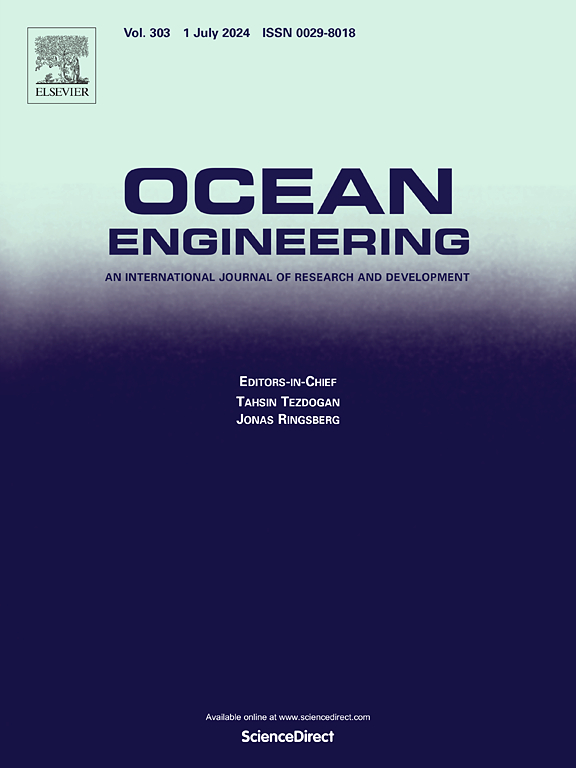Real-time prediction of structural responses in deep-water jacket platforms using Ada-STLNet: A comprehensive analysis with prototype monitoring data
IF 4.6
2区 工程技术
Q1 ENGINEERING, CIVIL
引用次数: 0
Abstract
Real-time prediction of the mechanical behaviors based on prototype monitoring data is crucial for ensuring the integrity and safety of deep-water jacket platforms. As complex nonlinear systems, these platforms’ response exhibit varying temporal trends, dynamic spatial correlations, and load dependencies. This makes accurate prediction of future axial force and bending moment responses a significant challenge. In this paper, a novel deep learning method called Adaptive Spatio-Temporal Load Network (Ada-STLNet) is proposed aiming to address the issue of multi-node axial force and bending moment response prediction of deep-water jacket platform. Our model utilizes an enhanced graph convolution (EGCN) and self-attention mechanism for efficient spatial correlation modeling in multi-node response, LSTM for long sequence temporal feature capture. It integrates spatial and temporal, along with load-aware modules to capture intricate patterns in structural responses. Additionally, a multi-gated coupling mechanism with two independent gating modules is designed to adaptively represent the complex dependencies of structural responses, ensuring model stability and robustness. Extensive experiments conducted on prototype structural monitoring data from a deep-water jacket platform in the South China Sea demonstrate that Ada-STLNet outperforms six traditional models, including HA, SVR, KNN, MLP, LSTM, and GRU, across various prediction steps. The proposed model exhibits superior accuracy, particularly in short-term predictions, achieving up to 62.80% improvement in MAE and 48.11% in RMSE for axial force predictions compared to the second-best model. Ablation studies confirm the effectiveness of each component within Ada-STLNet. This research highlights the potential of Ada-STLNet for reliable and accurate prediction of structural responses, contributing significantly to the field of marine engineering.
使用 Ada-STLNet 实时预测深水夹套平台的结构响应:利用原型监测数据进行综合分析
基于原型监测数据的机械行为实时预测对于确保深水夹套平台的完整性和安全性至关重要。作为复杂的非线性系统,这些平台的响应表现出不同的时间趋势、动态空间相关性和负载依赖性。因此,准确预测未来的轴向力和弯矩响应是一项重大挑战。本文提出了一种名为自适应时空载荷网络(Ada-STLNet)的新型深度学习方法,旨在解决深水夹套平台的多节点轴力和弯矩响应预测问题。我们的模型利用增强图卷积(EGCN)和自注意机制对多节点响应进行有效的空间相关性建模,并利用 LSTM 捕捉长序列时间特征。它集成了空间和时间以及负载感知模块,以捕捉结构响应中的复杂模式。此外,还设计了一种具有两个独立门控模块的多门控耦合机制,以自适应性地表示结构响应的复杂依赖关系,从而确保模型的稳定性和鲁棒性。在南海深水夹套平台的原型结构监测数据上进行的大量实验表明,Ada-STLNet 在不同预测步骤中的表现优于 HA、SVR、KNN、MLP、LSTM 和 GRU 等六种传统模型。与排名第二的模型相比,所提出的模型在轴向力预测方面的 MAE 和 RMSE 分别提高了 62.80% 和 48.11%,尤其是在短期预测方面,表现出更高的准确性。消融研究证实了 Ada-STLNet 中每个组件的有效性。这项研究凸显了 Ada-STLNet 在可靠、准确地预测结构响应方面的潜力,为海洋工程领域做出了重大贡献。
本文章由计算机程序翻译,如有差异,请以英文原文为准。
求助全文
约1分钟内获得全文
求助全文
来源期刊

Ocean Engineering
工程技术-工程:大洋
CiteScore
7.30
自引率
34.00%
发文量
2379
审稿时长
8.1 months
期刊介绍:
Ocean Engineering provides a medium for the publication of original research and development work in the field of ocean engineering. Ocean Engineering seeks papers in the following topics.
 求助内容:
求助内容: 应助结果提醒方式:
应助结果提醒方式:


